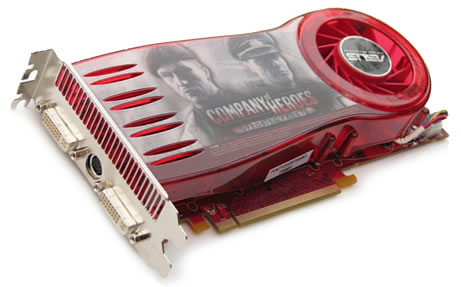This week AMD came to unveil its latest generation of ATI graphics hardware, an awaited release that without a doubt created a lot of expectations and speculation especially because of two factors:
1) The dominant player, Nvidia had just killed its whole high-end line up two weeks before, in favor of an affordable and more efficient model, the GeForce 8800GT.
2) A holiday season that has shaped up to become one of the most exciting in recent times for PC gamers, with a buttload of good titles like Unreal Tournament 3, Crysis, Call of Duty 4, World in Conflict, The Orange Box, Bioshock, Hellgate: London, and the list goes on...
But AMD's secret was not so much of a well kept one, and from the get go we learned that for a second time this year, the new Radeons would not be able to compete at the top of the food chain. Instead they would target the mainstream market where products in the $150-300 price range live and where Nvidia was barely offering anything exciting.
Back in May the first brainchild of AMD/ATI was launched and despite of being a good performer, the Radeon HD 2900XT was undoubtedly a bit of a flop. The product arrived late to compete with the GeForce 8800 and while its performance was good for the most part, it varied too much depending on the game and on the quality settings you used. Games such as Prey for example, would see the 2900XT offering very strong competitive performance with anti-aliasing disabled. However turn this setting on to a mere 2X and the 2900XT began to really fall behind.

Then on the sub-$200, it was the battle for the less worse card between Nvidia's dismal GeForce 8600 and the just as unimpressive Radeon HD 2600. So up until now, your best bet for an affordable gaming videocard was a previous generation ATI X1900GT or the GeForce 8800 GTS 320MB which still sold for a steep $300+.
While AMD has been slow to answer to Nvidia's offerings in the recent past, they were quite snappy answering to the latest 8800GeForce 8800 GT challenge. But wait a second, it's quite likely things did not happen in that order, and in fact the GeForce 8800 GT was the result of a super-quick reaction from Nvidia to steal ATI's thunder. This move is costing Nvidia who pretends to remain at the top of the add-in graphics market.
So, designed to combat the GeForce 8800 GT is the Radeon HD 3870, which features a long list of very impressive specifications. Already we have learned that the Radeon HD 3870 delivers 2900XT-like performance for the most part, which is both disappointing and impressive. It is disappointing because the GeForce 8800 GT is faster than the 2900XT in a majority of titles. On the other hand this new Radeon features an attractive price tag of just $220, making it a fair bit cheaper than the 8800 GT.
What is more impressive is the fact that AMD just announced the Radeon HD 3870 and it's already selling for just $220. For the time being, GeForce 8800 GT cards are very hard to come by and often users are forced to pay considerably more than the $250 MSRP.
So while the 8800 GT may have won the performance war, the Radeon HD 3870 could still come out on top if availability remains an issue for Nvidia. Today we have the chance to take a look at the ASUS Extreme AH3870, which is an actual shipping product based on the new Radeon HD 3870 GPU.